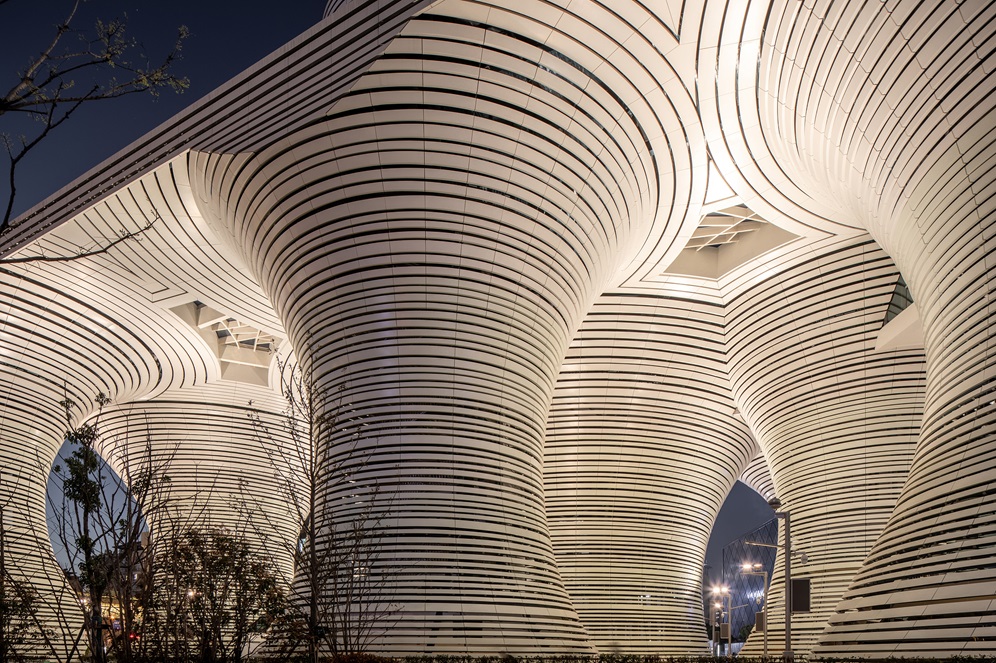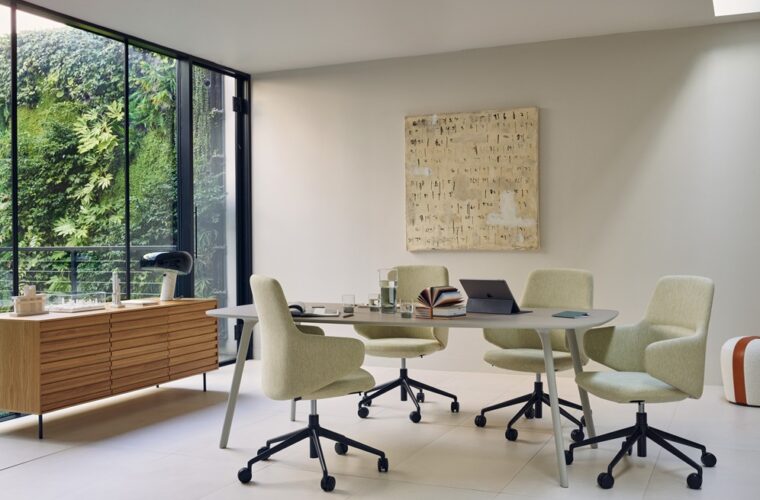Future Car Park, Hangzhou
Daniel Statham Studio, London
Lead architect: Ar. Daniel Statham
Located in the central CBD of Hangzhou, the Future Car Park spanning 30,740 sq. m. is a vertical parking complex that combines automated parking technology with green public spaces, generating a capacity of 500 parking spaces for electric and non-electrical vehicles. This comprises a series of futuristic towers, where cars are stacked by the lift and stacking system. The towers grow upwards into a connected roof form, accommodating entertainment facilities and roof gardens. The Future Car Park allows people to commute to urban hubs while bringing together the latest automated parking technology, public space, event space, and hanging gardens for the public.
Upon entering the Future Car Park, the circulation of cars and people is separated at Basement Level 01. Cars are directly taken to the lower parking zones within the basement or stack parking zones located in the towers, and the automated parking system allocates a designated parking spot to each car based on the required parking time set by the user, while continuously adjusting parking arrangements according to each car’s estimated pick-up time.
After entering the building, the parking user requests their car, which is then returned to them by the automated system from the towers to the Collection Zone. They can then leave the building through Exits A or B which guides them to the road.
The building is described as a Parking Oasis, as it celebrates the harmony between car and city with technology and architecture in a naturally sustainable building. The building’s semi-internal quality brings in natural daylight and ventilation that significantly reduces energy consumption from mechanical equipment to warm and cool the building throughout the year. It harnesses sunlight and stormwater to clean and irrigate the building.
The tower architecture has a porous cladding system that establishes the vertical structure for lateral stability of the whole building, but acts as a ventilation system that penetrates the basement areas. The Car Park ventilates car fumes from non-electric vehicles around the basement edge through the sinuous ramping systems and the porous towers similar to a chimney.
The building complex constitutes six circular towers and four orthogonal towers located on the edges of the site. Three circular towers at the center serve for car stacking, while the lifts in the other three towers allow visitors to reach the rooftop. The four columns at the corners of the site contain fire escapes.
A Plaza naturally forms at Level 01 and Basement Level 01 under the towers for people to meet and engage with the parkland, and the upward-extending towers become a ‘canopy of trees’ to shade from rain and summer sun. Cars are vertically transported within the towers by the lift and stacking system, and people are taken to the rooftops through the lift.
The building appears ‘see-through’ when viewed from a closer distance, where the facade is a louvered cladding that allows glimpses of the parking towers, automated parking technology, and the upper levels. People in the rooftop garden enjoy the cityscape and the building’s internal environment.
Ar. Daniel Statham, Founder and Director, Daniel Statham Studio, commented: “We have attempted to combine and celebrate automotive technologies in both its vehicular and parked form, in its ever-evolving sustainable pursuit and house it as ‘Art within the Architecture.’ It is a celebration of ‘Man and Machine’ in a space for the future city that makes a statement to create a healthier and more sustainable environment for all.”










